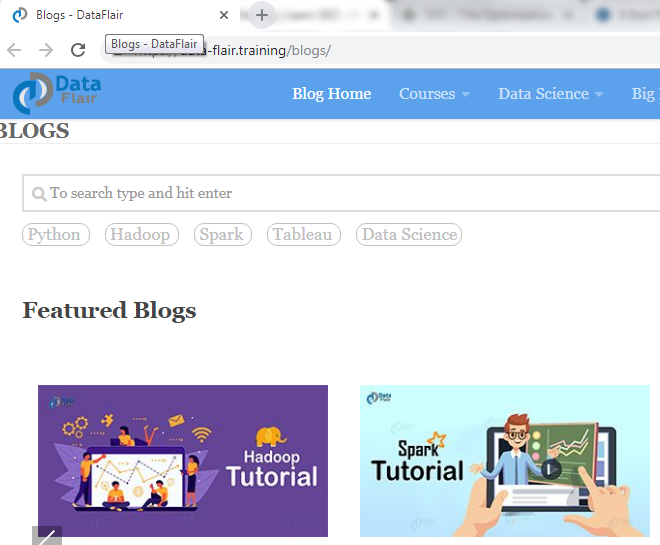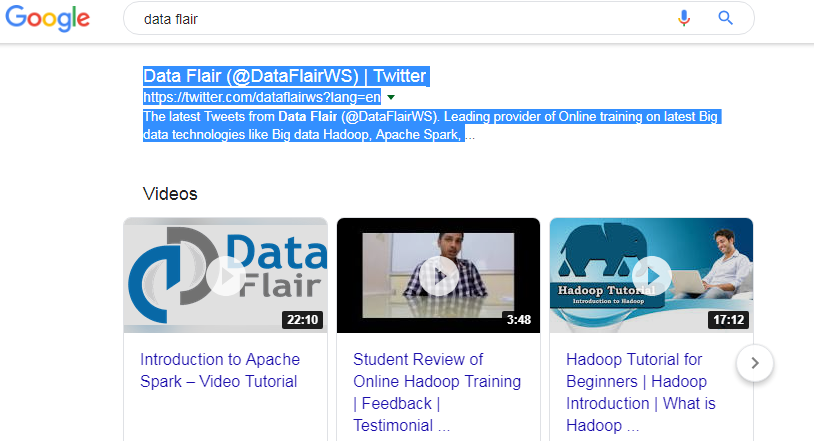Title Tag Optimization – How to Write an Eye-catching Title for Better SEO
FREE Online Courses: Click for Success, Learn for Free - Start Now!
How did you come on this webpage? You wanted to know about title tags; you searched on google and this page because of its title attracted you, so you clicked on it. This is exactly what is done in Title Tag Optimization. It helps in gaining user’s attention to get a click on the webpage. This blog will make you an expert in optimizing title tags and will cover all the important ways of writing a perfect attention-grabbing title.
What is Title Tag?
It is an HTML tag present in the head section of every website to make the user understand the content of your page. It helps the users to decide whether or not the page will able to satisfy their search query
Except for these two spaces: every search engine’s SERP and browser window as a clickable link, a user can’t see these tags anywhere on the website.
Significant use of title tags in designing of web pages:
- Keep your title under 9-10 words or within 60 characters.
- It is recommendable to use a title at the very beginning of your web page.
- If you are new in the business then don’t use your company name as your title unless that name is already well known in the market.
Why Title Tags are Important
Title tags play an important role and create the first impression in a visitor’s mind. So it’s very crucial to optimize your title tag.
1. SERP
Your title is the first thing that is displayed in SERP when searches with some relevant keywords. It does not matter if your website is ranked higher or not but with an optimized title, it can surely attract web traffic.
2. Browser window
When the visitor opens our website, the name of that page appears on the top of the browser window. Therefore use relevant and unique keywords that make your web page easily spottable.
3. Social networking
Social networking websites such as Facebook uses its own title tag to display content which means you can use different tags for different pages. This will optimize your website in a better way.
How to Write a Title for SEO
- Title tag length
Don’t make your title very long because if you do so search engine will cut it with an ellipsis or can just omit the extra characters. It is prescribed to use to the title of around 50-60 characters.
Wider characters like “W” will obviously take more space so try to avoid using caps lock to save space. Using longer title will not cause you any penalty but it’s good for using it in social networking.
Example – “what is the difference between an apple and Samsung mobile phones” – WRONG TITLE
Google will cut the title because of its length and it will appear as “what is the difference between apple and”.
Therefore, always keep in mind the length of your title.
- Keep it unique
Avoid the repetition of words as your keywords because that can affect your SEO and search engine can lower down your website’s ranking.
Example – shoes on sale, nice shoes, shoes and shoes
Here words “shoes” is used various times which can create a bad user experience. Therefore, always use new and unique keywords.
- Placing of keywords also matters
Always write important keywords at the beginning of the title. Don’t use the name of your brand or category instead put some unique keyword at the first place that can easily attract users.
- Use branding as a tool
Brand name should be used at the end of your title. This can still affect the CTR of your website. But in case you want to promote your brand first instead of your product Google can automatically detect your brand name to enhance your website’s ranking.
- Think about your visitors
The title will be the first thing your visitor will see. Hence it should look appealing to the audience that can easily draw their focus. It should convey the message that your user is looking for.
Why will Google Avoid Using Your Title?
1. Keyword stuffing in your title
If your title contains most of the keywords the Google can either escape it to rewrite it as per its own understanding. You should keep your title which is more users friendly.
2. Your title can be different from the searched query
It’s not necessary that your title should match exactly with the searched queries. But sometimes Google misjudges your title and avoids displaying on SERP. If your content is getting huge web traffic then re-writing it as per the searched queries would be a better idea.
3. Alternate title
You may choose to write the alternate title for the social networking websites as a precautionary measure but don’t add unwanted titles that can confuse your users.
4. DMOZ listing
Not really often but search engines may take out your title from open dictionary projects. This happens when your title does not match with searched keywords but does matches with DMOZ listing.
Title Tag Best Practices
- Try to give your title some uniqueness.
- For better SEO, try to give primary search keywords in each title of every page.
- Don’t just rely on 1-2 keywords instead create various keywords for the title tag.
- New website business owners who use their organization’s name, they should use at the end of the title and not in the beginning.
- Special focus on Grammar should be given when creating a heading, sub-heading, and other content.
- If you want Google to detect your website with ease, then always put title tag at the beginning instead of using it elsewhere.
Summary
This was all about Title Tag optimization, however, there is another important factor that can help you in getting a user-click on your webpage and that is Meta Tags. Both of these factors play an equally important role in making users visit your webpage. So, knowledge of just title tag is not sufficient, focus on Meta Tags is also a must.
Any queries? Don’t hold it on. Just comment below and get it solved.
You give me 15 seconds I promise you best tutorials
Please share your happy experience on Google



